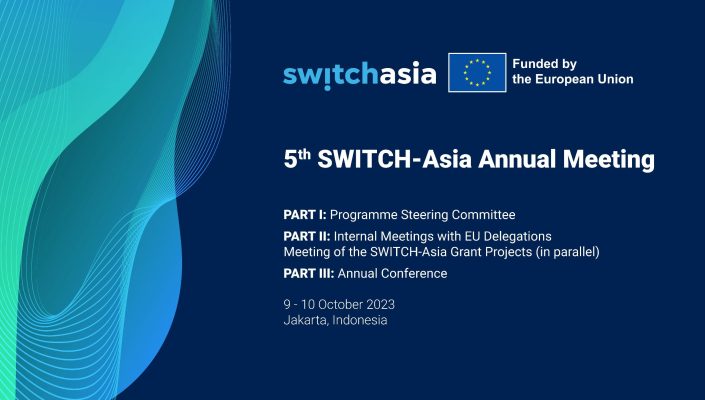Hợp tác xã Bản Diềm

Đi từ trung tâm xã Châu Khê, huyện Con Cuông, tỉnh Nghệ An khoảng 8km đường đất đá gồ ghề, một bản vùng sâu biên giới, nơi sinh sống của hơn 100 hộ đồng bào người Thái – đó là bản Diềm. Người dân bản Diềm sống chủ yếu dựa vào khai thác lâm sản phụ nên đời sống của người dân gặp rất nhiều khó khăn. Với đồng bào ở đây, nghề đan lát đã trở thành cái nghiệp ăn sâu vào tiềm thức của người dân.
Nhóm mây tre đan Bản Diềm
Địa chỉ: Bản Diềm, xã Châu Khê, huyện Con Cuông, tỉnh Nghệ An
Tài trợ bởi: Cơ quan hợp tác phát triển Thụy Sỹ và Oxfam Hồng Kông (OHK)
Cơ quan thực hiện: Viện Nghiên cứu và phát triển Ngành nghề nông thôn Việt Nam (VIRI)
Thời gian thực hiện: Năm 2013 – năm 2015
Với đồng bào ở đây, nghề đan lát đã trở thành cái nghiệp ăn sâu vào tiềm thức của người dân.
Đi từ trung tâm xã Châu Khê, huyện Con Cuông, tỉnh Nghệ An khoảng 8km đường đất đá gồ ghề, một bản vùng sâu biên giới, nơi sinh sống của hơn 100 hộ đồng bào người Thái – đó là bản Diềm. Người dân bản Diềm sống chủ yếu dựa vào khai thác lâm sản phụ nên đời sống của người dân gặp rất nhiều khó khăn. Với đồng bào ở đây, nghề đan lát đã trở thành cái nghiệp ăn sâu vào tiềm thức của người dân. Họ luôn muốn lưu giữ lại giá trị tốt đẹp mà cha ông để lại, duy trì và phát triển nghề mây tre đan. Nhưng vì nhiều lý do, nghề đan truyền thống đan có nguy cơ bị mai một, thậm chí thất truyền. Trước đây các thành viên tay nghề chưa cao, thu nhập thấp. Các thành viên trong thôn, bản không muốn tham gia làm nghề. Đến năm 2013, dự án “Mở rộng phát triển chuỗi giá trị mây lùng cho phụ nữ và người dân tộc thiểu số nghèo tỉnh Nghệ An” được triển khai, dự án do Cơ quan hợp tác phát triển Thụy Sỹ SDC và tổ chức Oxfam tại Việt Nam tài trợ. Viện Nghiên cứu và Phát triển Ngành nghề nông thôn Việt Nam là đơn vị thực hiện mô hình. Trong khuôn khổ dự án, cán bộ dự án và chính quyền địa phương, vận động các thành viên của bản Diềm tập hợp thành lập nhóm mây tre đan bản Diềm. Nhóm mây tre đan bản Diềm có 17 người tham gia, trong đó chủ yếu là phụ nữ, người có hoàn cảnh khó khăn, chủ yếu là phụ nữ neo đơn. Nhóm đã xây dựng quy chế hoạt động, được tham gia tập huấn và nâng cao tay nghề mây tre đan, đào tạo sản xuất sản phẩm mới. Bên cạnh đó nhóm được đào tạo kỹ năng kinh doanh, bán hàng, liên kết thị trường.
Sản phẩm của nhóm hoàn toàn tự nhiên sử dụng nguyên liệu tự nhiên (giang, tre, mây..), được sản xuất bằng phương pháp thủ công, hoàn toàn sử dụng bằng tay. Bằng đôi bằng tay khéo léo và sự sáng tạo của thành viên, sản phẩm của nhóm mang nhiều đặc trưng nổi bật. Sản phẩm được nhuộm màu tự nhiên bằng các loại lá, củ trong rừng. Sản phẩm cài hoa văn truyền thống của đồng bào dân tộc Thái. Mỗi hoa văn mang trong mình câu chuyện đầy ý nghĩa nhân văn của đồng bào dân tộc Thái.
Sản phẩm của nhóm đảm bảo chất lượng, tự nhiên, an toàn đối với cho sức khỏe người tiêu dùng. Sản phẩm có thể bảo quản và sử dụng trong thời gian dài. Sản phẩm được hoàn thiện, chống mối mọt bằng việc hun khói, gác bếp. Sản phẩm bán tại địa phương, bán trong tỉnh và ngoài tỉnh.
Khi tham gia nhóm, các thành viên tạo thêm thu nhập, họ còn còn hỗ trợ lẫn nhau trong cuộc sống thường ngày, tình làng nghĩa xóm được gắn kết hơn. Đặc biệt, nhóm đã thành lập ra quỹ Tương trợ. Hàng tháng, sau khi quyết toán tiền công của mỗi người trong nhóm, mỗi người sẽ đóng góp 20.000 đồng vào quỹ Tương trợ. Và quỹ này sẽ lần lượt cho các thành viên trong nhóm vay để phát triển sản xuất hoặc giải quyết các công việc khó khăn trong gia đình, giúp các cháu nghèo có điều kiện đến trường.
Chị Lang Thị Hoa, trưởng nhóm cho biết, các thành viên trong nhóm rất vui khi tham gia nhóm. Hiện tại hàng hóa của nhóm sản xuất ra ngày càng nhiều và hàng sản xuất đến đâu tiêu thu hết đến đó và thu nhập ngày càng được tăng lên. Sản phẩm của nhóm được mọi người dân trong huyện biết đến, và đã tham gia một số hội chợ và lễ hội lớn trong và ngoài tỉnh. Đến nay, nhóm đã đi vào hoạt động ổn định và thường xuyên kết nạp thêm các thành viên mới.





